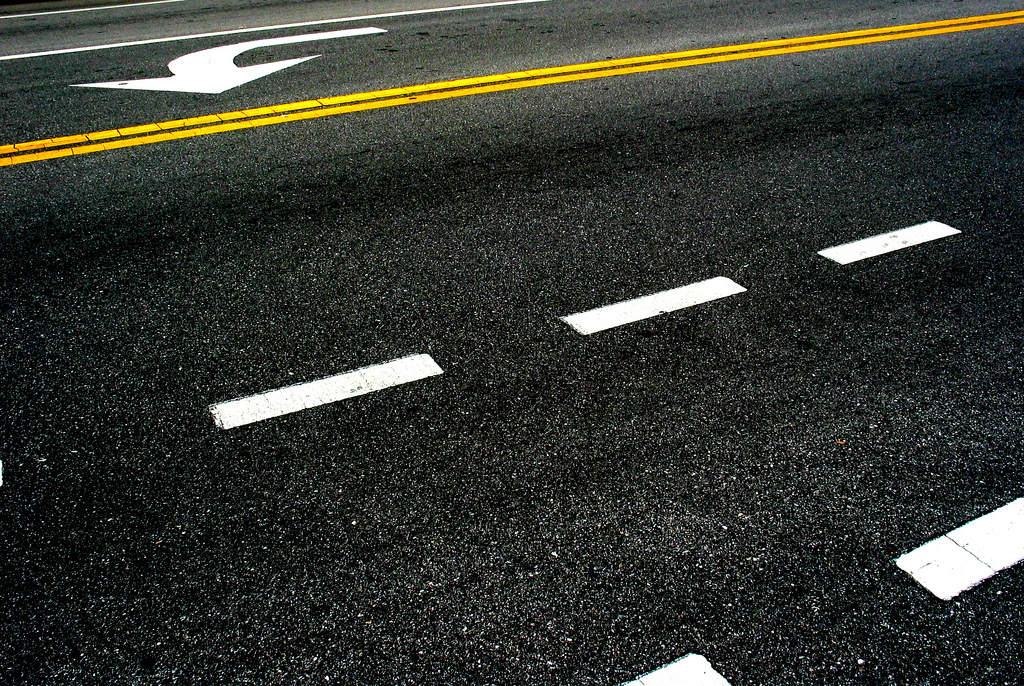

- DIAGONAL LINES ON THE PAVEMENT WARN DRIVERS OF HOW TO
- DIAGONAL LINES ON THE PAVEMENT WARN DRIVERS OF PLUS
Single yellow line road markings are put in place to inform motorists that part-time parking restrictions are in force.
DIAGONAL LINES ON THE PAVEMENT WARN DRIVERS OF PLUS
The double yellow lines sections explains what the various signs and markings mean, plus who is legally permitted to wait on double yellow lines. There are various sign, marking and exceptions that do allow motorists to wait on double yellow lines for a short period of time. See also cycle lane road signsĭouble yellow lines generally means no waiting at any time.
DIAGONAL LINES ON THE PAVEMENT WARN DRIVERS OF HOW TO
The cycle lanes section offers a guide to all motorists to the meaning of road markings surrounding cycle lanes and how to correctly deal with cycle boxes. See single white line for other types of white lines found at the edge of the road, where they are found and any parking restrictions that may be imposed.Ĭycle lanes and boxes Cycle lanes and boxesĬycle lanes and cyclist boxes are designed to keep a safe distance between motorists and cyclists. Used on the left-hand side of the road and alongside the central reservation of dual carriageway roads. Single white line at the edge of the carriageway, other than at junctions, a single white line exits on private drives and lay-bys. Single white line roadside Single white line roadside See double white lines for the different types of double white line road markings and how to deal with them on a driving test. See hatched road markings for further information.ĭirectional arrow marking Directional arrow markingĪrrow indicating the direction in which to pass hatched markings and double white lines, or the route that high vehicles should take under a low arch bridgeĭouble white line road markings must not be straddled or crossed except to turn into or out of a side road or property, avoid a stationary vehicle blocking the lane you are traveling in, or overtake a cyclist, horse or road works vehicle moving at not more than 10 mph. The solid white line forms a continuous boundary prohibiting vehicles from entering except on an emergency. These hatched road markings are used for a reduction in lanes.

Lane reduction hatched road markings Lane reduction hatched road markings It is also used for segregated left-turn lanes at roundabouts. See Dual carriageway for further information. This marking is likely to be found in one-way streets with central islands and where an exit lane leaves at a junction.Ĭhevron road markings solid line Chevron road markings with solid lineĬhevron road markings with a solid white line forming a continuous boundary prohibit traffic from entering are used in such areas as dual carriageway and motorway slip-roads. Vehicles should not enter the chevron area unless safe to do so. Part of the carriageway where traffic travels in the same direction on either side of the chevron marking. See hatched road markings for further information.ĭividing chevron markings Dividing chevron markings Hatched road markings are often used to separate opposing flows of traffic. Hatched road markings or diagonal white lines are surrounded by either continuous solid white lines or broken lines. Hatched road markings Hatched road markings See hazard warning line for a further explanation. Signs may also be used to indicate the nature of the hazard. Hazard warning lines replace a centre line or lane line. As can be seen in the image to the left, the white lines are much longer than usual with small gaps between. Hazard warning lines are used to mark hazards ahead such as a bend in the road or an approach to a junction. See traffic lights and how they work for further information. The stop line although similar to that found at junctions as above, is not as wide. Solid white stop lines are also located at traffic lights. Stop line at traffic lights Stop line at traffic lights As can be seen in the image, the white dashes on lane lines are smaller with much larger gaps than a normal centre line that can be seen in the image above. Lane line found on single or dual carriageway roads separating traffic travelling in the same direction. This line is used to provide a visual divide between both carriageways traveling in opposing directions. Many roads use this dividing line although certain roads such as quiet residential back-roads or some rural roads and lanes may have no markings at all. Many of the explanations can be followed through to an alternative page for an extended in-depth explanation to help with the theory test and practical driving test training.Ĭentre broken white line Centre broken white lineĬentre broken white line on a single carriageway road. This section provides all UK road markings and lines with diagrams and meanings for theory test revision and for those learning to drive. A large part of the theory test is based on road markings and lines knowledge and of course this knowledge is also essential when learning to drive and taking the driving test.


 0 kommentar(er)
0 kommentar(er)
